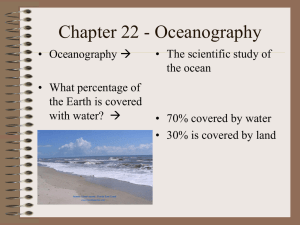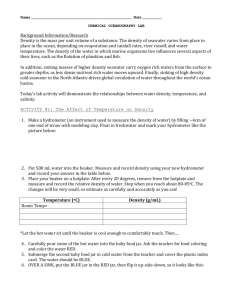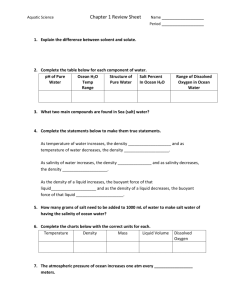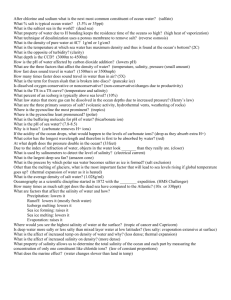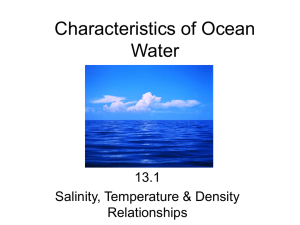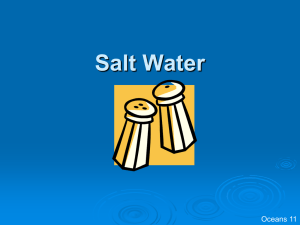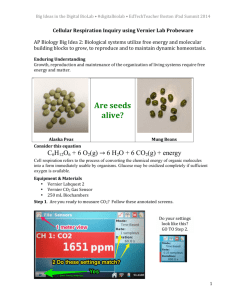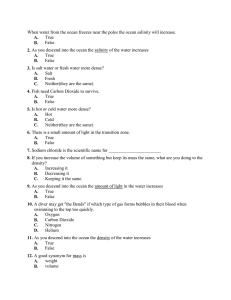CO 2 and Temperature
advertisement
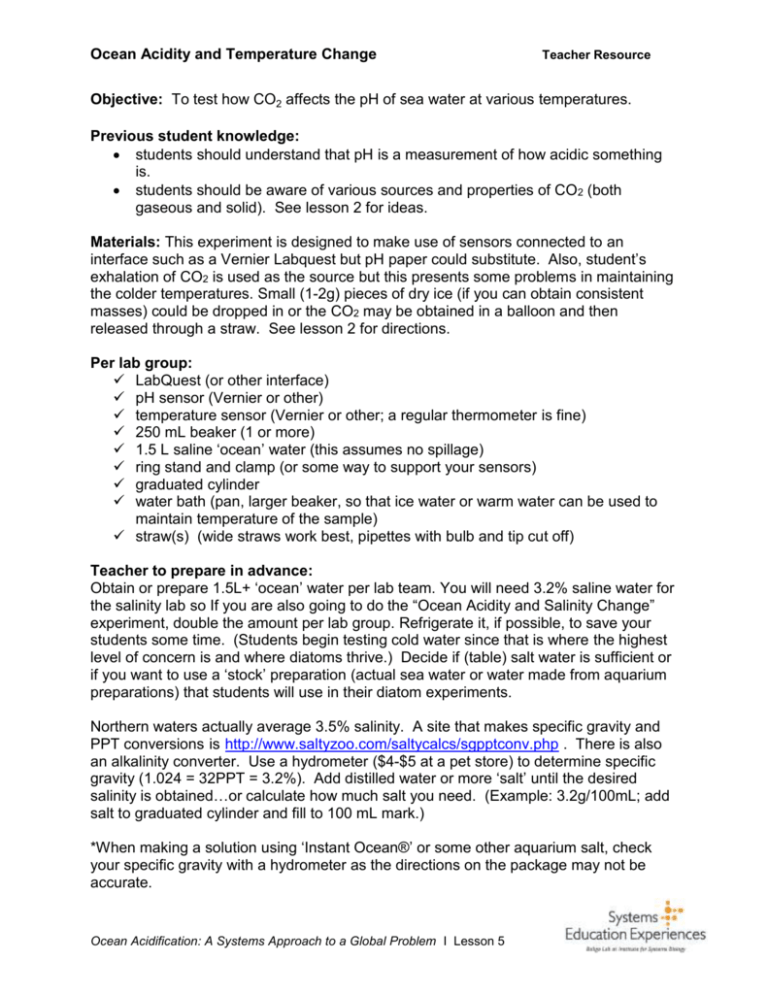
Ocean Acidity and Temperature Change Teacher Resource Objective: To test how CO2 affects the pH of sea water at various temperatures. Previous student knowledge: students should understand that pH is a measurement of how acidic something is. students should be aware of various sources and properties of CO2 (both gaseous and solid). See lesson 2 for ideas. Materials: This experiment is designed to make use of sensors connected to an interface such as a Vernier Labquest but pH paper could substitute. Also, student’s exhalation of CO2 is used as the source but this presents some problems in maintaining the colder temperatures. Small (1-2g) pieces of dry ice (if you can obtain consistent masses) could be dropped in or the CO2 may be obtained in a balloon and then released through a straw. See lesson 2 for directions. Per lab group: LabQuest (or other interface) pH sensor (Vernier or other) temperature sensor (Vernier or other; a regular thermometer is fine) 250 mL beaker (1 or more) 1.5 L saline ‘ocean’ water (this assumes no spillage) ring stand and clamp (or some way to support your sensors) graduated cylinder water bath (pan, larger beaker, so that ice water or warm water can be used to maintain temperature of the sample) straw(s) (wide straws work best, pipettes with bulb and tip cut off) Teacher to prepare in advance: Obtain or prepare 1.5L+ ‘ocean’ water per lab team. You will need 3.2% saline water for the salinity lab so If you are also going to do the “Ocean Acidity and Salinity Change” experiment, double the amount per lab group. Refrigerate it, if possible, to save your students some time. (Students begin testing cold water since that is where the highest level of concern is and where diatoms thrive.) Decide if (table) salt water is sufficient or if you want to use a ‘stock’ preparation (actual sea water or water made from aquarium preparations) that students will use in their diatom experiments. Northern waters actually average 3.5% salinity. A site that makes specific gravity and PPT conversions is http://www.saltyzoo.com/saltycalcs/sgpptconv.php . There is also an alkalinity converter. Use a hydrometer ($4-$5 at a pet store) to determine specific gravity (1.024 = 32PPT = 3.2%). Add distilled water or more ‘salt’ until the desired salinity is obtained…or calculate how much salt you need. (Example: 3.2g/100mL; add salt to graduated cylinder and fill to 100 mL mark.) *When making a solution using ‘Instant Ocean®’ or some other aquarium salt, check your specific gravity with a hydrometer as the directions on the package may not be accurate. Ocean Acidification: A Systems Approach to a Global Problem І Lesson 5
